Precast concrete pavers are versatile and resilient, and give homeowners and professionals many possibilities for creating a fun and attractive outdoor paved surface. Pavers set with stones or gravel make a beautiful and permeable patio surface. Thick pavers set edge-tight are far more interesting in the driveway than plain concrete. And a mix of paver colors adds dimension to a small patio. Let’s learn more about what precast concrete pavers are all about.
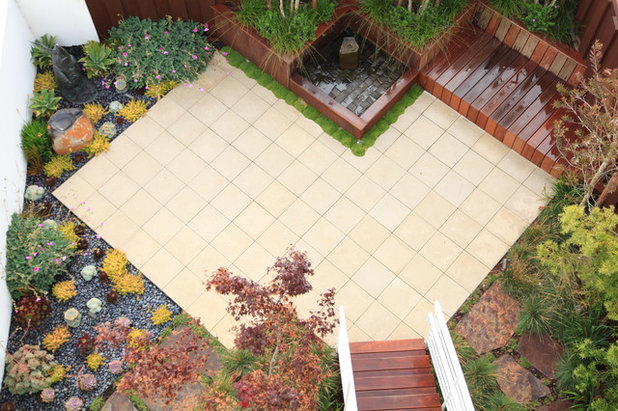
The Garden Route Company
The basics. The manufacturer forms precast concrete pavers by pouring concrete into a mold and then allowing it to cure. The precast pavers are available at the local hardware store, priced by individual paver or by the pallet. A professional usually purchases pavers by the pallet.
Precast concrete pavers are also referred to as modular pavers, and many product lines are specifically designed so the pavers will fit together in several configurations. Pavers of different shapes — hexagonal, variable-width rectangles and combined shapes — create interlocking patterns across a surface.
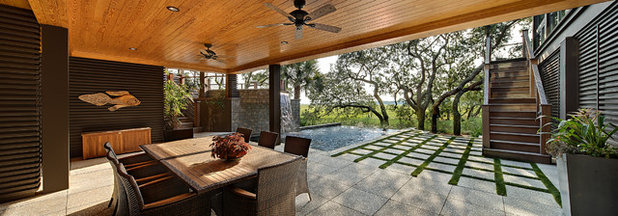
The Anderson Studio of Architecture & Design
Cost. The most basic precast pavers can cost a few bucks apiece at a big-box hardware store. Installed by a pro, precast pavers start at $8 per square foot. The cost increases for custom colors and finishes and for unusual sizes.
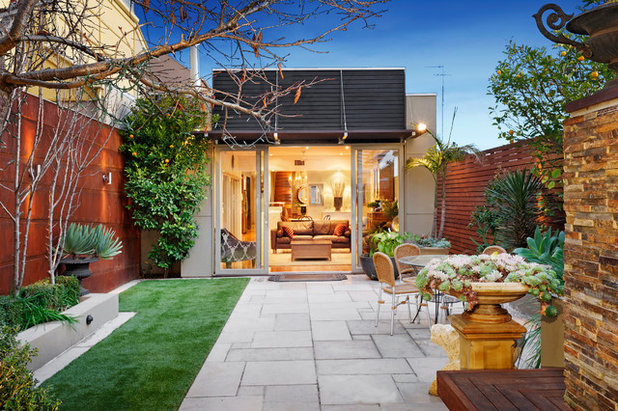
Bagnato Architects
Pros:- Readily available in many colors, sizes and finishes
- Can be permeable to allow for water infiltration
- Easily configured for small, large, narrow or irregularly shaped spaces
- Strong, durable and low maintenance
Cons:- Can settle unevenly over time on nonmortared installations
- Custom colors and finishes are more expensive
- Colored and dyed pavers fade over time
Shown: Polished concrete pavers
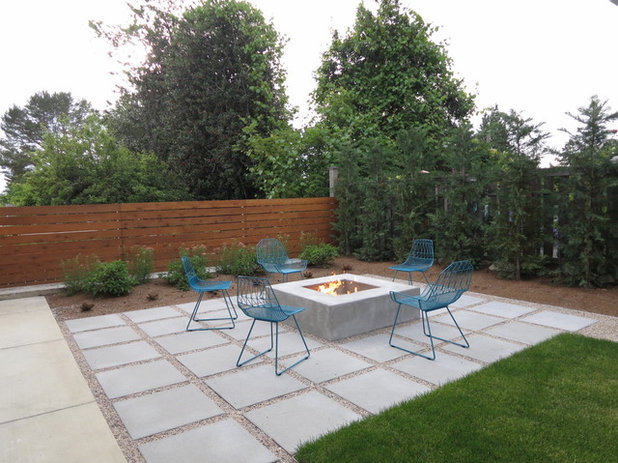
Coates Design Architects Seattle
Material specifications. Precast concrete pavers are available in a wide range of styles, and it’s helpful to know what the material specifications mean in order to choose the right product for your project.
- Thickness: Pavers for pedestrian areas should be at least 2 inches thick, and vehicular areas should use pavers that are 3 or more inches thick.
- Size and shape: Sizes range from 2- by 3-inch rectangles up to 36- by 24-inch pieces for residential products. Look at the patterns created by a field of pavers in addition to looking at the single paver shape.
- Color: Different colors are achieved in several ways. The concrete either is dyed using an additive that’s mixed into the concrete, or the surface of the precast paver has a colored finish applied.
- Hardness (measured in pounds per square inch, or psi): In the U.S., precast concrete pavers are cured to the standard 8,000 psi for the highest quality. Don’t use a product that does not meet this standard.
- Finish: Available finishes are similar to those for cast-in-place concrete. Sandblasted, grooved, textured and lightly polished are all available.
Tip: Get product samples from the supplier and test them in sun and shade in your outdoor space prior to ordering.
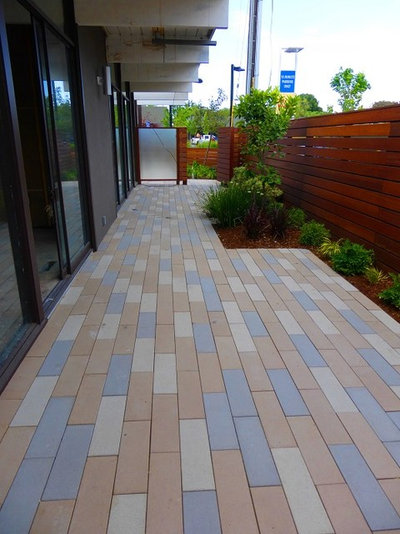
Stepstone Inc
What makes them sustainable:- Reusable: Precast concrete modular pavers can be reused with ease if they are in good shape (free of cracks). You may be able to purchase reclaimed pavers from a landscape contractor or local supplier.
- Permeable: When combined with other stormwater management techniques, they can be used to create a permeable paving surface that allows for water infiltration.
- Low heat: Precast pavers come with a solar reflectance index (SRI) rating to indicate how much heat they absorb or reflect in the sun. Choose pavers with a high SRI to diminish the urban heat-island effect around your home.
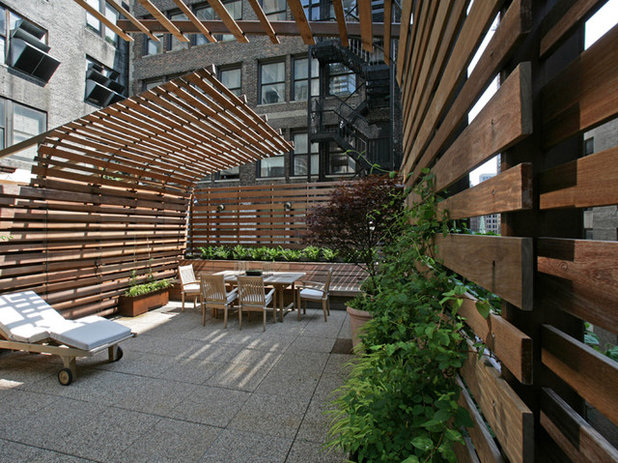
Lynn Gaffney Architect, PLLC
Installation notes. Precast pavers must be installed on a prepared base of compacted gravel or sand, depending on the type of soil underneath. The base (also called the base course) is created to make a level drainage layer underneath the pavers. Additionally, pavers can be mortared in place or placed with hand-tight joints with sand swept in between the pavers. Whatever installation type you use, be certain that the paved surface is sloped to drain properly.
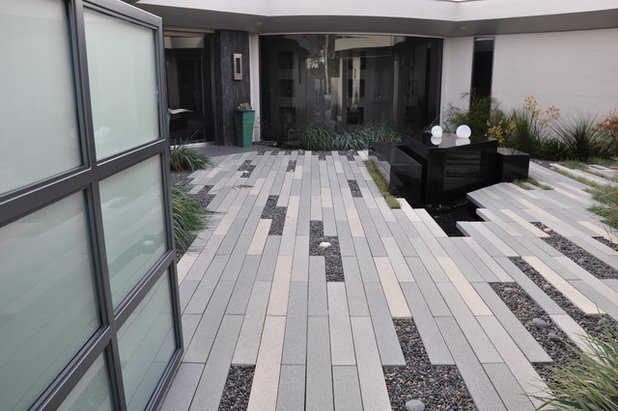
Jeffrey Gordon Smith Landscape Architecture
How to Use Precast Pavers in the LandscapeCreate a rhythm. Precast pavers create a visual field, or a pattern, defined by their shape and dimensions. Shown here are extra long and thin pavers that create a long, linear rhythm in a paved area. Pavers have also been selectively removed or spaced, with the voids filled with gravel that matches the gravel at the edges.
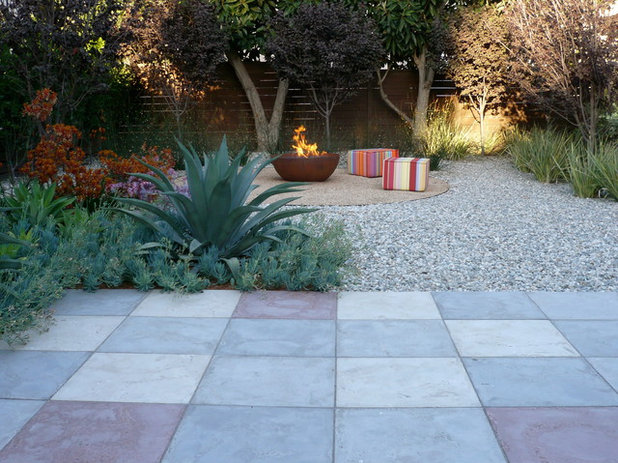
Valle de Verde
Add multiple colors. This patio has precast concrete pavers of the same dimension but with a selection of varying colors. Using multiple colors brings more visual interest to an otherwise monotonous concrete tone.
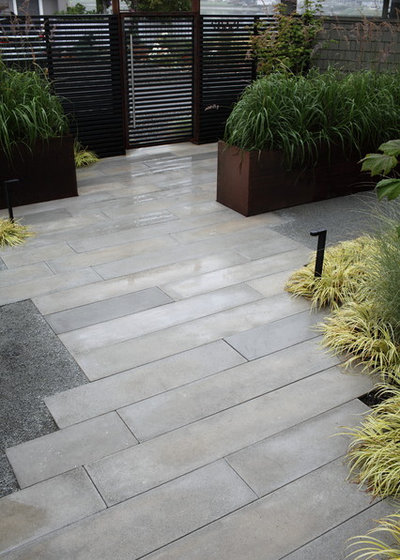
Wittman Estes Landscape
Create a custom size and finish. Precast pavers can be custom designed to suit your needs. Shown here are custom precast concrete plinths fitted together to make a lovely surface for a walkway. Work with a landscape architect or designer or a manufacturer of precast concrete to create your own custom paver.
See more of this Seattle-area front yard
More: How to Pick the Right Floor for Your Garden Room
See more ways to get your patio right





